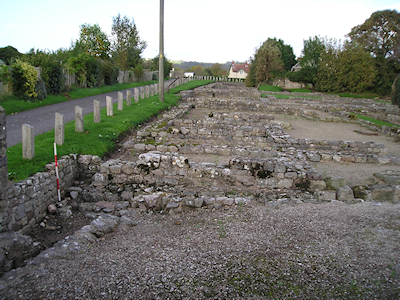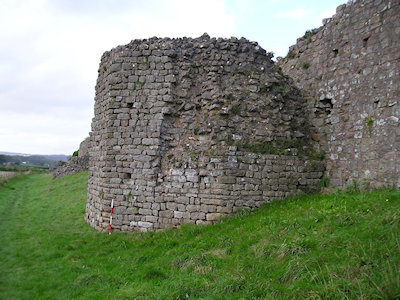
Towns and rural settlements existed within the same landscape, but it is not always easy for archaeologists to devise ways of looking at the relationship between the two, or indeed between one town and another. We assume that the countryside was the place where most wealth creation took place, since in the Roman world wealth was largely based on agriculture (Although there is also some evidence for barns, byres and paddocks within the walls at Caerwent, which may imply that some land was farmed from the town itself - unless it related to keeping horses or mules for carriages or riding (Brewer 2006)). Besides administrative functions, the town would have provided a place where agricultural produce was sold, and where inhabitants and visitors would have provided a big enough market to make it worthwhile for craftspeople to settle and produce goods that could not be made at home (Figure F).

One possible way of studying the relationship between towns is to compare what was happening in different towns at the same date. For example, the canabae at Caerleon and the settlement at Bulmore both seem to have got going at the end of the 1st century AD and then to have flourished until the end of the 3rd century or beginning of the 4th century, when military activity at Caerleon is either very much reduced, or has finished altogether. In contrast, Caerwent, which contained significant areas of vacant land in the 2nd and 3rd centuries, seems to take off at the beginning of the 4th century (Figure G). As Caerleon and Caerwent are not much more than 12km apart, it is possible that there was not enough economic activity to support two towns so close together. We can put this together with the evidence for rural sites that have produced very little pottery, and suggest these sites were largely self-sufficient and did not need (or could not afford) to buy very much.

Cowbridge was probably the market centre for the Vale, which is known to have considerable densities of rural sites, including approximately half the villa sites known in the south-east. Interestingly, the distribution pattern of villas in relation to this town is different from that observed in the more Romanised parts of Britain: although villas would normally be expected to cluster around towns of this type, numbers would be expected to peak within 4km and almost all the known villas in the Vale are significantly further away (5km to 10km). This suggests that the relationship between towns and villas here was different (possibly again because there was only limited market activity).
Internet Archaeology is an open access journal based in the Department of Archaeology, University of York. Except where otherwise noted, content from this work may be used under the terms of the Creative Commons Attribution 3.0 (CC BY) Unported licence, which permits unrestricted use, distribution, and reproduction in any medium, provided that attribution to the author(s), the title of the work, the Internet Archaeology journal and the relevant URL/DOI are given.
Terms and Conditions | Legal Statements | Privacy Policy | Cookies Policy | Citing Internet Archaeology
Internet Archaeology content is preserved for the long term with the Archaeology Data Service. Help sustain and support open access publication by donating to our Open Access Archaeology Fund.